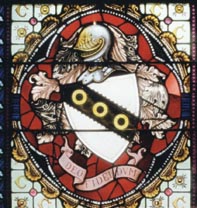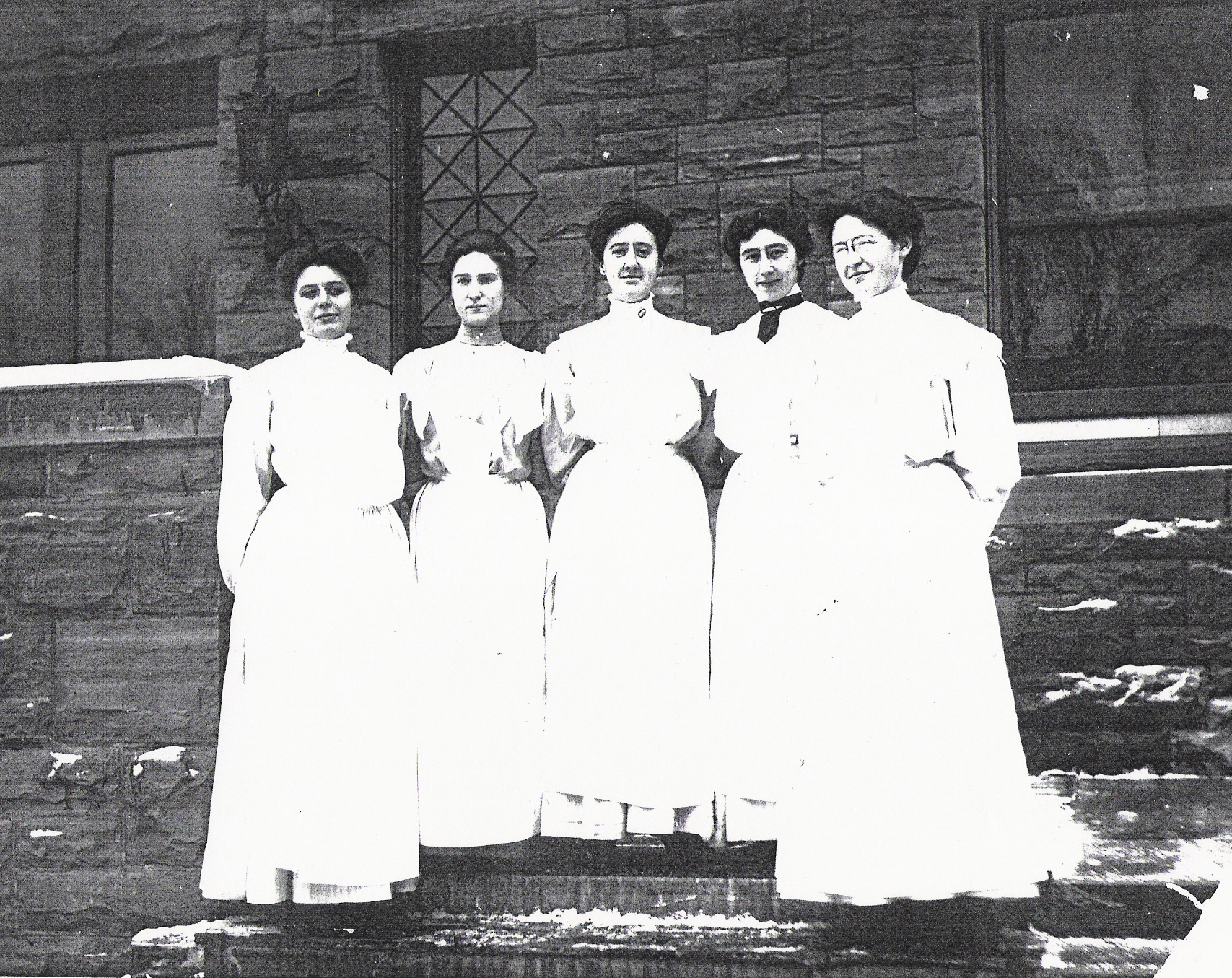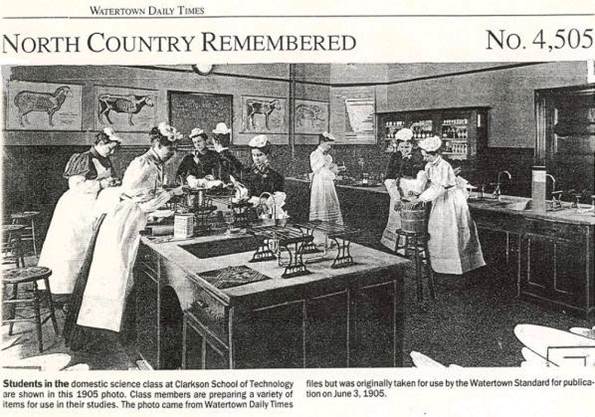



Three women, Elizabeth, Frederica, and Lavinia Clarkson, founded The Thomas S. Clarkson Memorial School of Technology in Potsdam, New York in 1896 in memory of their brother. Thomas S. Clarkson had intended to start a vocational school for men and women, but he died in an accident in his family’s sandstone quarry before he could do so.
Thus, the school, later called the Clarkson College of Technology and then, starting in 1984, Clarkson University, began as a coeducational institution. The first Clarkson catalog said that “both sexes are admitted on equal footing to the privileges of the school.” It mentioned nothing about race, and all of the early students appeared to be white.
Men at Clarkson could take courses in the engineering disciplines or in what later would be called the industrial arts, such as machine work and woodwork, while the women at Clarkson could take courses in domestic science, domestic art, and domestic engineering (later called home economics). Dividing coursework according to gender was typical of the late nineteenth century because it allowed women to study science but without directly threatening men’s scientific achievements. Most of these early female Clarkson graduates who worked outside of the home found jobs in education, generally as teachers.
In 1907, Clarkson discontinued its programs for women because 1) it did not want to compete with the neighboring normal school (teacher training college, now SUNY Potsdam), which offered some similar programs, 2) it became more focused on promoting the study of engineering, and 3) the programs had attracted so few students.
Pictured above are five of the six women from the class of 1900. They all received certificates in domestic science for two years of work.